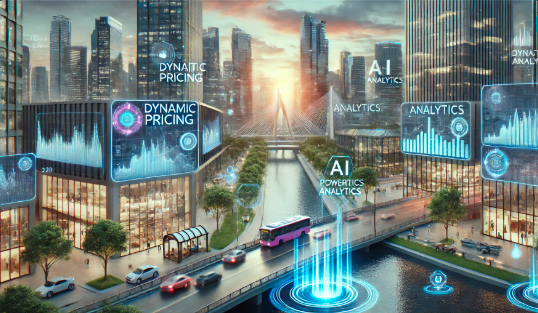
The visual culture of today forms part of how we communicate, learn, and express ourselves. It transformed the notion of the image from traditional arts through digital photography into the latest creation in visual production with AI algorithms. Such rapid changes in technology, further supported by the increased visualization of our lives online, have deeply changed not only our way of thinking about visuals but also in their making and use.
The Digital Revolution and the Proliferation of Images Online
The internet has played a big role in redefining visual culture. The rise of social media, websites, and digital marketing has left the visual landscape more cluttered than ever. Instagram and other social media platforms, including Snapchat and TikTok, allow users to curate an unprecedented level of control over visual self-presentation. Filters enable a stylized, curated visual presentation reflective of idealized versions of life. It is through such carefully contrived visuals that what we feel about ourselves and others has increasingly come to be dictated. The trend completely changes how images have been deciphered and analyzed from simple records of the moment to active constructions to denote meaning and emotion.
The Role of Artificial Intelligence in Visual Perception
With continuous development in technology, the way images are generated and interacted with is also continuously changing. Probably the most important innovation in recent years has been the development of AI image generation tools. These tools, powered by machine learning algorithms, allow users to create detailed and realistic visuals without the need for advanced technical skills. Free AI image generators pop up on all corners, further democratizing a process that allows just about anyone to build a surrealist landscape or a photorealistic portrait.
It’s an exciting new phase of how we can interact with images: first, most images were produced by people ; today, artificial intelligence can produce images and graphics indistinguishable from those produced by a human. The most important thing this calls into question is the question of authorship, of creativity, even of the truthfulness of the image. Who is the author of an image that has been created with the aid of a computer AI? Does it lose all value because it has not been created by the human hand? Such questions unsettle our conventional ways of viewing and understanding an image.
Moreover, images generated through AI are democratizing the making of images. Thanks to tools like free AI image generators, those with internet access can now create professional visuals themselves, sans special equipment or software. The implications this could have on industries reliant on quality visuals, such as advertising, entertainment, and journalism, are huge. On the other hand, it is also one area where a lot of concerns have been raised regarding authenticity and possible manipulation of images through AI in misleading ways.
The Changing Nature of Image Consumption
With the evolution in our way of relating to pictures comes how we consume images. If one had to physically go to an art gallery to view pictures or flip through a photo album, today, via social media platforms, streaming platforms, and news websites, images are viewed quickly and in superfluous amounts. The implications have been felt in a rethink in the way visuals are seen-still not inert and passiveness-engaging, slow objects, rather one threads via content flows through with a scroll over and a sharing instantaneously with someone else.
But above all, there is an especial growth of the video on shorter notice that changes completely the point over the visuals. It has also made small chunks of moving images consumed universally, more often than not with the amalgamation of TikTok and Instagram Reels with their sound and text. This chunky and fast visual is becoming an element of more and more moments in our everyday experience-from high fashion to the world of civil rights protests. The possibility is smaller for any picture since they now come in endless sets. Therefore, the visuals should be striking and appealing on an emotional level to make an impact.
And with that growth has come an unprecedented volume of consumed visuals, begetting image fatigue. A world that is in the eye of the image storm hardly ever really stops to truly look at, or appreciate, any one of them. Hence, a growing hunger starts to develop for more meaningful and intentional visuals with layers of emotion. A demand starts to build up for imagery that tells stories, evokes ideas, and tugs on real emotion.
The Future of Visual Perception
Going forward, the meaning of visuals will continue to change. Further advances in AR and VR may turn on their head the way we think of and interact with images. Just think of taking a virtual walk through a digital landscape whose visuals change in real-time with every movement and interaction. Or, for that matter, think of this: AI-generated images get so real that one could soon actually dive into worlds that are totally virtual.
Undoubtedly, with the emergence of AI tools, it is bound to continue shaping our relationship with visuals in creation and experience in ways unimaginable hitherto. The more these technologies advance, the more we need to be in a position to consider the ethical and cultural implications of the visuals created by artificial intelligence. What will be our definition of art when machines can also create it? What place will human creativity have in a world smitten by AI-generated imagery?
Moreover, Geekzilla CES 2023 was not just attendance of the annual Consumer Electronics Show but a travel inside the beating core of technological advancement.
Conclusion
In the final analysis, this new learning of what and how one sees reflects the transformation that is taking place in society. From the invention of photography to rising AI in generating images, our relations with the visual have been radically transformed by technology and culture. While such developments have indeed opened up fresh avenues for creative expression and self-representation, they problematize the very basis on which rests the meaning and veracity of the visual image. As we forge ahead in this rapidly changing visual landscape, awareness of the power of images and the ways they shape our understanding of the world should continue.
Related Articles
Everything You Need to Know About Turkey Doubles Tournament T-Shirts
A Complete Guide to Strat Wiring Harness sodorless Systems
Comprehensive Guide to 23151-251233 Filtro: Specifications, Compatibility, and Maintenance
Unveiling the Beauty of halauin stauettes inquestion: A Deep Dive into Hawaiian Heritage






